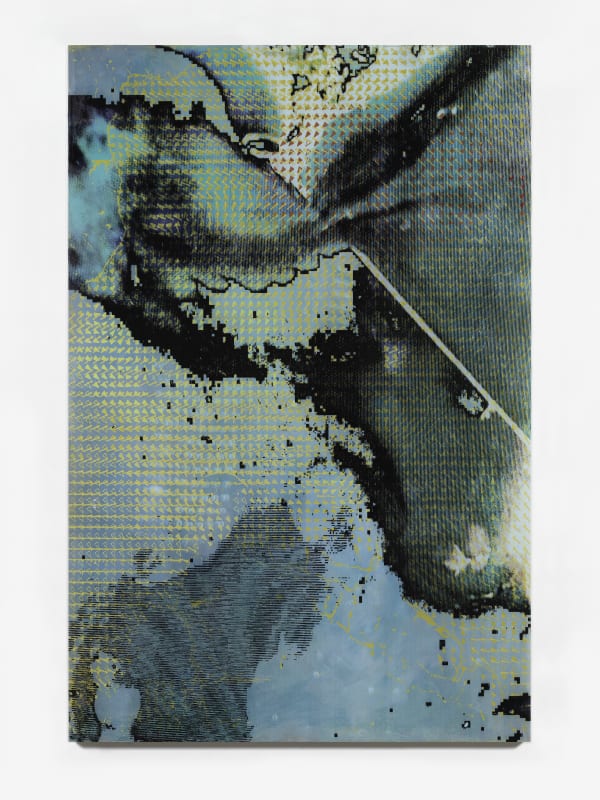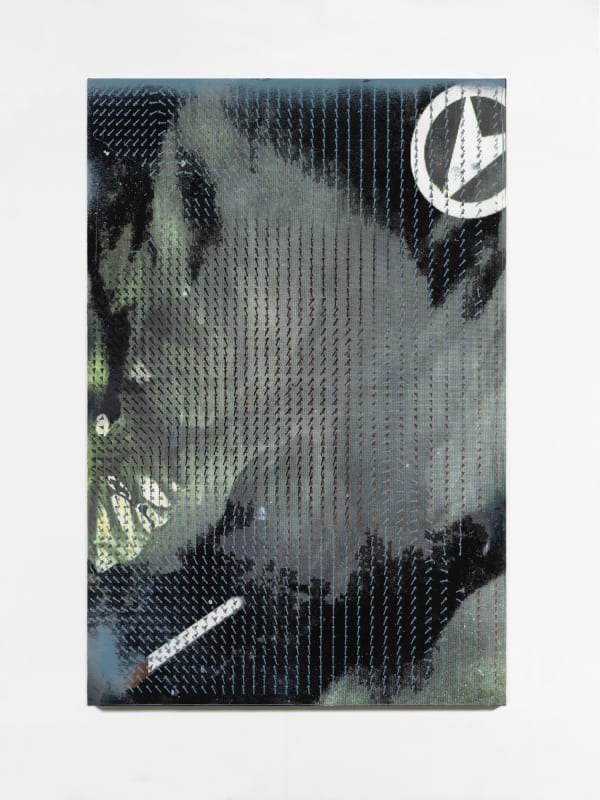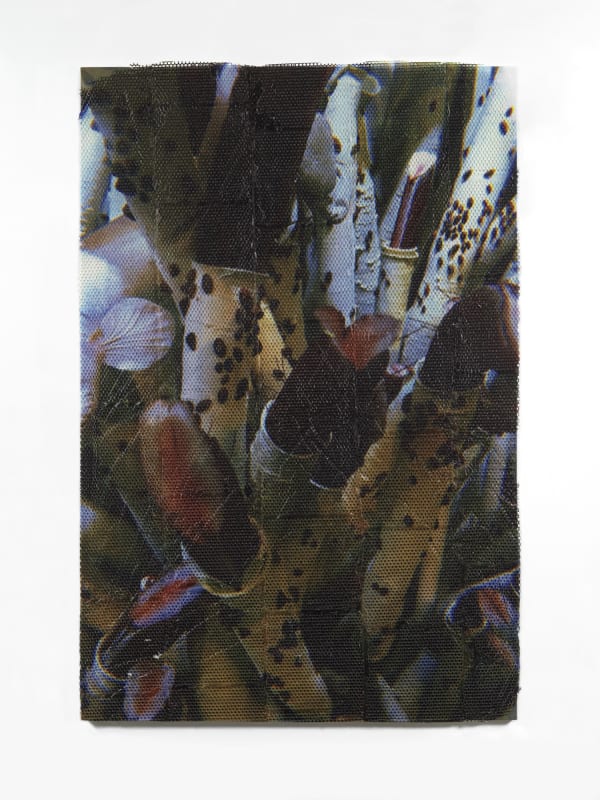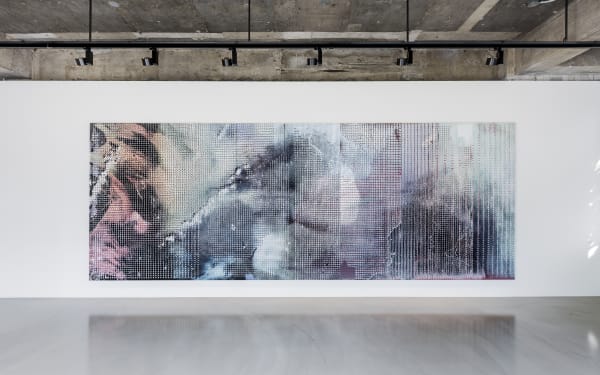Hugh Scott-Douglas: Hard Rain
Gallery Baton is pleased to present Hugh Scott-Douglas’s first solo exhibition Hard Rain from May 17th to June 19th, 2019. Scott-Douglas’ work is concerned with systems of value, trade routes and the circulation of currency and commercial goods, exploring and enacting methods of migration, translation and transaction. He makes use of a wide range of techniques and media, from laser cutting, inkjet printing and photography, to numerical data and satellite mapping software, and his practice is Interrogating tensions between analogue and digital modes of production.
“Everybody Talks About the Weather, But Nobody Does Anything About It.” — Charles Dudley Warner
“What do the images of the planet look like when they are circulated by surplus producers? “…In most cases regarding lay usage, these images have not only been carefully edited in order to show generally positive examples of modern development, but they have also already been interpreted for viewers (or rather consumers), insofar as they have been packaged as pictures, but without typically offering access to location, date, ownership, legibility or other source information. In other words, the images seem hyper-legible, but in fact they are far from transparent or direct.” — T.J. Demos, Against the Anthropocene: Visual Culture and Environment Today (Berlin: Sternberg Press, 2017)
Hugh Scott-Douglas has been committed to a practice that investigates situations where the conditions related to production put the efficacy of the maker into question. This practice has unfolded through the exploration of early cyanotype blueprints, analog technologies of mechanical reproduction, anti-counterfeiting measures and dissembled watch movements. Since 2016, Scott-Douglas has been engaging with thematic explorations of nature and its relationship to capitalism. This exhibition continues the conceptual arc of his practice, standing as the forth chapter and using the concept of the flood to explore the notion of erasure.
Hard Rain brings together two bodies of work for the first time. Both series of work employ the tools native to the worlds of industry and commerce in an exploration of capital’s attempt to both abstract and quantify the experiential and the scientific qualities of nature. The works hone in on examples of natural bodies made visible and obfuscated in the service of the production of value and the organization of labor.
'Trade Winds' is the umbrella term for an ongoing series of printed paintings born out of Scott-Douglas’ continued interest in images and objects that exist as casualties of material moving through production and distribution networks. For this series, Scott-Douglas uses FleetMon, a piece of logistics industry-specific software normally used to track ships on the ocean. Scott-Douglas programs it to generate images of the ocean’s fundamental weather patterns, which he subsequently captures. Non-graphic, organic and experiential elements of the ocean—the direction of currents and winds, for example—are quantified here through graphemes. These captured images are manipulated, both materially and chromatically, and then printed digitally in a manner that echoes the analog process of screen-printing further masking what was there in reality. In this latest iteration, subtle white monochromes painted in acrylic polymer, acrylic mediums and oil paint, executed by the artist, are covered by the printed image. The artist’s work is ultimately covered by that of a machine, effectively erasing all trace of it.
The series Natural History is a group of printed paintings that originated as digital photographs, which capture the peripheries of the wildlife dioramas of the American Museum of Natural History in New York City, and specifically the Milstein Family Hall of Ocean Life. Opposite to the realities of the ocean, the Museum’s staged plastic environments promote idealized and fixed ecosystems, which exist outside of the perilous reaches of human influence. Like the aerial perspective, the museological lens carries with it a history of colonialism and projects a certain scientific authority. These tableaus function as a sort of promissory note, presenting their viewers with a portal to this alternate and optimistic synthetic planet. Backed by the gold reserve authority of the institution, as it were, they offer a respite from and rebuttal to the reality of the ocean—a counter-narrative offered up for agreeable consumption by the public. Appropriating the protocols of the capitalist’s treatment of images, Scott-Douglas captures and processes these pseudo-worlds with a succession of artificial intermediaries.
Beginning with the glass barrier of the vitrine itself and the lens of the camera, the exercise of effectively erasing what was originally there continues with a digital photograph, which, in turn, is subjected to an algorithm that employs various effects to simulate those typical of a plastic body Leica. This is followed by digital transfer and digital printing. The supports that receive the images are made by the artist in his studio using synthetic material originally purchased to assist in the shipment and protection of works themselves. This multi-tiered process culminates in representations of plastic worlds rendered via plastic technologies—handsome, passive scenes that appear as natural, techniques that simulate analog methods—abstractions of their source material which fully erase the realities of their referent environment.
Hugh Scott-Douglas (b.1988 in Cambridge) received B.F.A in Sculpture from Ontario College of Art and Design, Toronto and studied at Pratt Institute, New York. He has held solo exhibitions including Tochigi Prefectural Museum of Fine Arts, Tochigi (2016) and has participated in group exhibitions at San Francisco Museum of Modern Art, San Francisco (2016); Staatliche Kunsthalle Baden-Baden, Baden-Baden (2016); Columbus Museum of Art, Columbus (2016); Yokohama Museum of Art, Yokohama (2015); Museum of Contemporary Art, Chicago (2015), Rennie Museum, Vancouver (2015); Worcester Art Museum, Worcester (2016) and etc. His works are in the collections of SFMoMA, USA; Museum of Contemporary Art Chicago, USA; Dallas Museum of Art, USA; Colby Museum of Art, USA; Eli and Edythe Broad Art Museum, USA; Art Gallery of Ontario, Canada; Odermatt Collection, Canada, Sammlung Goetz, Germany and Pinault Collection, Italy.
* Charles Dudley Warner (1829–1900) was an American essayist, novelist.
** T.J. Demos, Against the Anthropocene: Visual Culture and Environment Today (Berlin: Sternberg Press, 2017). The Anthropocene is a proposed epoch dating from the commencement of significant human impact on the Earth's geology and ecosystems, including, but not limited to, anthropogenic climate change. T.J. Demos is an art historian and cultural critic who writes on contemporary art and visual culture, particularly in relation to globalization, politics, migration and ecology. Currently a Professor in the Department of History of Art and Visual Culture (HAVC) at UC Santa Cruz.
-
 Hugh Scott-DouglasIncheon, 2019
Hugh Scott-DouglasIncheon, 2019 -
 Hugh Scott-DouglasSacheon, 2019
Hugh Scott-DouglasSacheon, 2019 -
 Hugh Scott-DouglasBusan, 2019
Hugh Scott-DouglasBusan, 2019 -
 Hugh Scott-DouglasDangjin, 2019
Hugh Scott-DouglasDangjin, 2019 -
 Hugh Scott-DouglasJeju, 2019
Hugh Scott-DouglasJeju, 2019 -
 Hugh Scott-DouglasSeogwipo, 2019
Hugh Scott-DouglasSeogwipo, 2019 -
 Hugh Scott-DouglasNatural History, 2019
Hugh Scott-DouglasNatural History, 2019 -
 Hugh Scott-DouglasNatural History, 2019
Hugh Scott-DouglasNatural History, 2019 -
 Hugh Scott-DouglasNatural History, 2019
Hugh Scott-DouglasNatural History, 2019 -
 Hugh Scott-DouglasNatural History, 2019
Hugh Scott-DouglasNatural History, 2019 -
 Hugh Scott-DouglasNatural History, 2019
Hugh Scott-DouglasNatural History, 2019 -
 Hugh Scott-DouglasNatural History, 2019
Hugh Scott-DouglasNatural History, 2019 -
 Hugh Scott-DouglasNatural History, 2019
Hugh Scott-DouglasNatural History, 2019 -
 Hugh Scott-DouglasBusan II, 2019
Hugh Scott-DouglasBusan II, 2019















